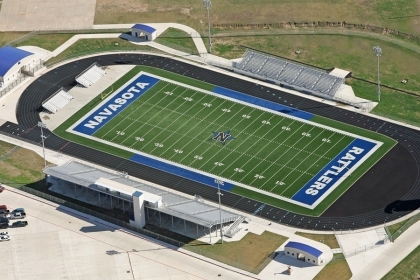Athletic Field Projects
Gamma Construction:
Championing Athletic Excellence Through Infrastructure
From its architectural inception in 1985 within Houston’s dynamic landscape, Gamma Construction has sculpted premier athletic fields, celebrating the spirit of sportsmanship and community engagement.
Gamma’s athletic projects are more than just fields; they’re arenas of dreams. Every turf, track, and court is meticulously constructed for optimal performance, ensuring athletes have the best platform to showcase their prowess. From lush football fields to pristine tennis courts and state-of-the-art running tracks, Gamma’s fields prioritize safety, durability, and performance.
Central to their construction philosophy is a holistic understanding of sports. Drainage systems safeguard fields from waterlogging, while advanced lighting ensures playability during all hours. Spectator comforts aren’t overlooked, with seating and amenities enhancing the viewer experience.
Environmental stewardship is paramount. Gamma employs sustainable materials and practices, such as eco-friendly turfs and water-conservation systems, reinforcing a commitment to green athletics.
Anchored in the sporting heart of Houston, Gamma Construction’s legacy is evident in every cheer, sprint, and goal celebrated on their fields. Their athletic infrastructures are not merely grounds but symbols of community passion, athletic determination, and architectural mastery, propelling sports into the future.

Featured Projects

New Caney ISD District Stadium
Porter, Texas

St. Francis Episcopal Gym and Athletic Field Renovations
Houston, Texas

Navasota ISD District Athletic Stadium
Navasota, Texas
